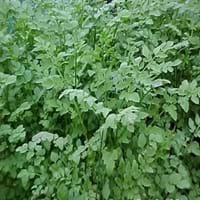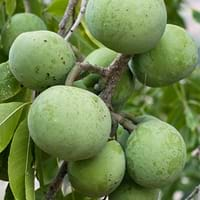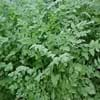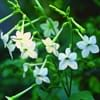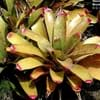Life Span
Perennial
Perennial
Type
Tender Perennial
Fruit
Origin
Southern Asia, Southeastern Asia, India, China, Japan, Australia
Mexico, Central America
Types
Not Available
Reinikie, Dade, Pike, Suebelle and Golden
Climate
Number of Varieties
Not Available
Habitat
Bog Garden, Cultivated Beds, Ponds
Tropical Highlands
USDA Hardiness Zone
9-11
8-11
AHS Heat Zone
Not Available
11-6
Sunset Zone
H1, 9, 14, 15, 16, 17, 18, 19, 20, 21, 22, 23, 24
H1, H2, 14, 15, 16, 17, 18, 19, 20, 21, 22, 23, 24
Habit
Spreading
Oval or Rounded
Flower Color
White
Light Green, Ivory
Flower Color Modifier
Bicolor
Bicolor
Fruit Color
Not Available
Light Yellow, Yellow green, Light Green
Leaf Color in Spring
Green
Green, Dark Green
Leaf Color in Summer
Green
Green, Dark Green
Leaf Color in Fall
Green
Green, Dark Green
Leaf Color in Winter
Light Green
Light Green
Leaf Shape
simple-pinnate or double-pinnate
Alternate
Plant Season
Summer, Fall
Spring, Summer, Fall, Winter
Sunlight
Full Sun, Partial Sun, Partial shade
Full Sun
Type of Soil
Clay, Loam, Sand
Loam, Sand
The pH of Soil
Acidic, Neutral, Alkaline
Acidic, Neutral
Soil Drainage
Poorly Drained
Well drained
Bloom Time
Late Summer, Early Fall
Winter, Late Winter
Tolerances
Drought
Drought
Where to Plant?
Ground
Ground
How to Plant?
Divison, Layering, Seedlings, stem tip cuttings
Budding, Grafting, Seedlings, Vegetative
Plant Maintenance
Medium
Medium
Watering Requirements
Needs Very high moisture
Do not water frequently, Needs more water during establishment, Water during dry weather
In Summer
Lots of watering
Lots of watering
In Spring
Moderate
Moderate
In Winter
Average Water
Average Water
Soil pH
Acidic, Neutral, Alkaline
Acidic, Neutral
Soil Type
Clay, Loam, Sand
Loam, Sand
Soil Drainage Capacity
Poorly Drained
Well drained
Sun Exposure
Full Sun, Partial Sun, Partial shade
Full Sun
Pruning
Remove dead leaves
Remove damaged leaves, Remove dead branches, Remove dead leaves
Fertilizers
Apply 10-10-10 amount
All-Purpose Liquid Fertilizer
Pests and Diseases
Aphids, Armyworm, Bacterial Blight, Damping off, Downy mildew
Red blotch
Plant Tolerance
Drought
Drought
Flowers
Showy
Insignificant
Flower Petal Number
Single
Single
Fragrant Flower
Not Available
Not Available
Fragrant Leaf
Not Available
No
Fragrant Bark/Stem
Not Available
No
Foliage Texture
Fine
Medium
Foliage Sheen
Matte
Matte
Attracts
Bees, Flies, Insects
Birds
Allergy
no allergic reactions
drowsiness
Aesthetic Uses
Bog Garden, Ground Cover
Not Used For Aesthetic Purpose
Beauty Benefits
Not Available
Not Available
Environmental Uses
Air purification
Air purification
Medicinal Uses
Depurative, Febrifuge, Styptic
Anti-carcinogenic effects, Colon Cancer
Part of Plant Used
Leaves, Root, Seeds
Fruits, Pulp, Seeds
Other Uses
Used as a seasoning in soups, useful as a ground cover
Used As Food
Used As Indoor Plant
No
No
Used As Outdoor Plant
Yes
Yes
Garden Design
Container, Edible, Groundcover, Herb / Vegetable, Water Gardens
Edible, Fruit / Fruit Tree, Shade Trees, Tropical
Botanical Name
OENANTHE javanica
CASIMIROA edulis
Common Name
Java Water Dropwort, Water Celery, Water Parsley
White Sapote
In Hindi
Water Celery
White Sapote
In German
Wasser Sellerie
White Sapote
In French
Céleri d'eau
Sapote blanche
In Spanish
El apio agua
White Sapote
In Greek
Σέλινο νερό
White Sapote
In Portuguese
Aipo água
White Sapote
In Polish
Seler Woda
White Sapote
In Latin
Aqua Apium
White Sapote
Phylum
Magnoliophyta
Magnoliophyta
Class
Magnoliopsida
Magnoliopsida
Clade
Angiosperms, Asterids, Eudicots
Angiosperms, Eudicots, Rosids
Tribe
Oenantheae
Not Available
Subfamily
Apioideae
Not Applicable
Importance of Water Celery and White Sapote
Want to have the most appropriate plant for your garden? You might want to know the importance of Water Celery and White Sapote. Basically, these two plants vary in many aspects. Compare Water Celery and White Sapote as they differ in many characteristics such as their life, care, benefits, facts, etc. Every gardener must at least have the slightest clue about the plants he wants to plant in his garden. Compare their benefits, which differ in many ways like facts and uses. The medicinal use of Water Celery is Depurative, Febrifuge and Styptic whereas of White Sapote is Anti-carcinogenic effects and Colon Cancer. Water Celery has beauty benefits as follows: Not Available while White Sapote has beauty benefits as follows: Not Available.
Compare Facts of Water Celery vs White Sapote
How to choose the best garden plant for your garden depending upon its facts? Here garden plant comparison will help you to solve this query. Compare the facts of Water Celery vs White Sapote and know which one to choose. As garden plants have benefits and other uses, allergy is also a major drawback of plants for some people. Allergic reactions of Water Celery are no allergic reactions whereas of White Sapote have drowsiness respectively. Having a fruit bearing plant in your garden can be a plus point of your garden. Water Celery has no showy fruits and White Sapote has showy fruits. Also Water Celery is not flowering and White Sapote is not flowering . You can compare Water Celery and White Sapote facts and facts of other plants too.
